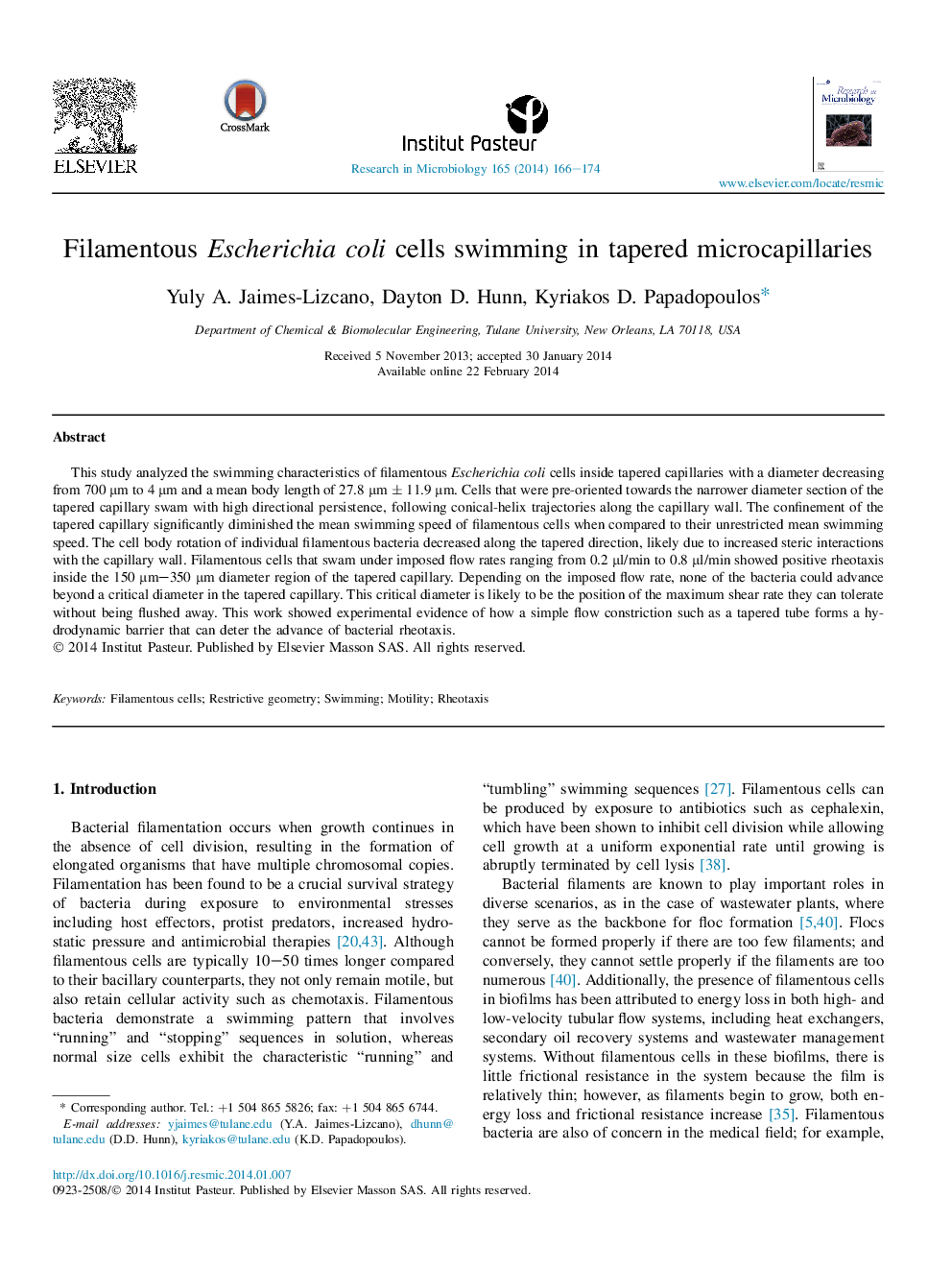| Article ID | Journal | Published Year | Pages | File Type |
|---|---|---|---|---|
| 4358579 | Research in Microbiology | 2014 | 9 Pages |
This study analyzed the swimming characteristics of filamentous Escherichia coli cells inside tapered capillaries with a diameter decreasing from 700 μm to 4 μm and a mean body length of 27.8 μm ± 11.9 μm. Cells that were pre-oriented towards the narrower diameter section of the tapered capillary swam with high directional persistence, following conical-helix trajectories along the capillary wall. The confinement of the tapered capillary significantly diminished the mean swimming speed of filamentous cells when compared to their unrestricted mean swimming speed. The cell body rotation of individual filamentous bacteria decreased along the tapered direction, likely due to increased steric interactions with the capillary wall. Filamentous cells that swam under imposed flow rates ranging from 0.2 μl/min to 0.8 μl/min showed positive rheotaxis inside the 150 μm–350 μm diameter region of the tapered capillary. Depending on the imposed flow rate, none of the bacteria could advance beyond a critical diameter in the tapered capillary. This critical diameter is likely to be the position of the maximum shear rate they can tolerate without being flushed away. This work showed experimental evidence of how a simple flow constriction such as a tapered tube forms a hydrodynamic barrier that can deter the advance of bacterial rheotaxis.
